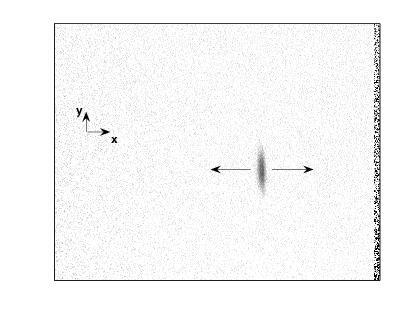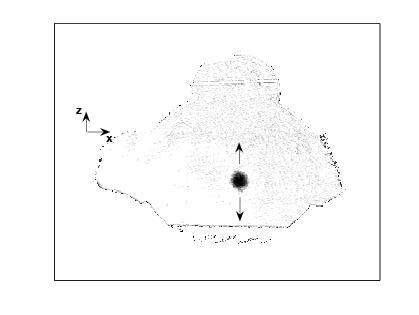

After a condensate is made, we must load it into an interferometry device. We have elected to perform our BEC interferometry within an atom waveguide, which will support the atoms against gravity and permit long measurement times (ideally up to 1 second). Our waveguide is based on a four-wire linear quadrupole, with an additional oscillating bias field. This configuration is known as a time-orbiting potential, or TOP, trap. The mechanical sketch below depicts the four current-carrying rods and their mounts. Each rod is actually a coaxial pair, with the inner conductors supplying the oscillating bias field and the outer conductors supplying the linear quadrupole field. To the right of the mechanical sketch is a picture of our waveguide, before it was inserted into the vacuum chamber. Each rod is 5mm in diameter, with 10mm separation between adjacent rods. The end loops provide the option of applying an axial B field to trim the position of the atoms along the axis of guide.

More images of the waveguide are shown above and below. Two more mechanical sketches show the entire waveguide mount, which supplies current to the conductors and also acts as a heat sink. The top sketch shows an axial view of the guide, while the bottom sketch shows a top view. The picture below shows the waveguide after insertion into the vacuum chamber. The waveguide sits in the science cell.


Once the condensate is made, we gradually ramp down the main confinement fields and ramp on the waveguide fields. Sequential images of the condensate during this process are shown below. The images are taken from above the chamber, so that the y direction (long axis of images) is along the axis of the waveguide. The condensate is observed to change location, and also lengthens along the waveguide axis. We initially believed that the position change occurred because the center of the waveguide was not precisely aligned with the center of the inital atom trap, but further investigation has suggested that this may be part of an oscillatory process.
In order to verify that our trap operated as intended, we characterized the fields. We perturbed the cloud in an effort to induce oscillations at the resonance frequencies of the trap. Instead of executing a smooth transfer into the waveguide, we give the atoms a sharp push.





